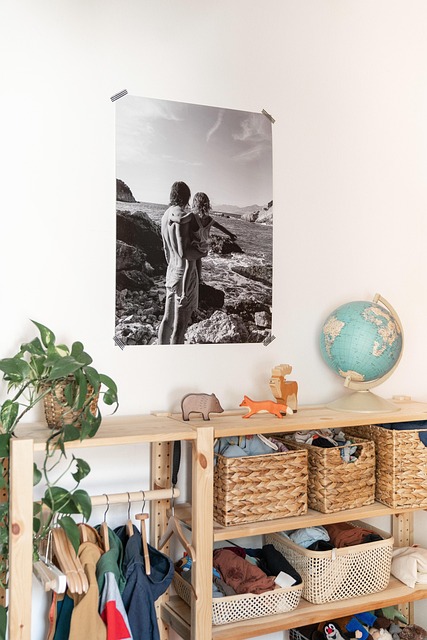Read tips for selecting interior design styles
Selecting the right interior design style can transform your living space into a reflection of your personality and lifestyle. With countless design approaches available, from minimalist modern to cozy traditional, understanding how to navigate these options is essential. This guide provides practical insights into choosing design materials, optimizing layouts, selecting color schemes, and creating spaces that balance aesthetics with functionality.

Discover diverse design materials
The materials you choose form the foundation of any interior design style. Natural materials like wood, stone, and leather bring warmth and texture to spaces, creating an organic feel that works well in rustic, Scandinavian, or farmhouse styles. Metal accents in brass, copper, or stainless steel add sophistication and pair beautifully with contemporary or industrial aesthetics. Glass elements introduce lightness and transparency, making rooms feel more spacious and open.
When selecting materials, consider their durability and maintenance requirements alongside their visual appeal. For high-traffic areas, opt for resilient surfaces like engineered hardwood or porcelain tiles that mimic natural stone. Textiles play an equally important role in defining your design style. Velvet and silk evoke luxury and work well in traditional or glam interiors, while linen and cotton suit casual, relaxed spaces. Mixing materials thoughtfully creates depth and visual interest without overwhelming the senses.
Find layouts that enhance flow
A well-planned layout ensures your space functions smoothly while supporting your chosen design style. Begin by analyzing traffic patterns and identifying the primary purpose of each room. Furniture placement should facilitate easy movement while creating distinct zones for different activities. In open-concept spaces, use area rugs, lighting fixtures, or furniture groupings to define separate areas without physical barriers.
Consider the scale and proportion of furniture relative to room dimensions. Oversized pieces can make small spaces feel cramped, while furniture that is too small may look lost in larger rooms. Leave adequate clearance around furniture for comfortable navigation, typically 30 to 36 inches for main walkways. The layout should also highlight architectural features and direct attention to focal points like fireplaces, windows with views, or statement artwork. Symmetrical arrangements create formal, balanced spaces suited to traditional styles, while asymmetrical layouts offer a more relaxed, contemporary feel.
Choose color palettes that inspire
Color profoundly influences mood and perception of space. Neutral palettes featuring whites, grays, and beiges provide a versatile backdrop that works across multiple design styles and allows flexibility in accent colors. These timeless choices also make spaces feel larger and brighter. For those seeking more personality, consider color psychology when making selections. Blues and greens promote calmness and work well in bedrooms and bathrooms, while warm tones like terracotta, mustard, and rust energize living areas and dining spaces.
When building a color scheme, follow the 60-30-10 rule: use your dominant color for 60 percent of the space, a secondary color for 30 percent, and an accent color for the remaining 10 percent. This creates visual balance while preventing color overload. Test paint samples on walls at different times of day, as natural and artificial lighting dramatically affect how colors appear. Consider how colors flow from room to room to create cohesion throughout your home. Monochromatic schemes using varying shades of a single color offer sophistication, while complementary colors positioned opposite each other on the color wheel create dynamic contrast.
Tailor interiors to your style
Your home should reflect your unique preferences and lifestyle needs. Start by identifying design styles that resonate with you through research and inspiration gathering. Create a mood board with images, fabric swatches, and material samples that capture your vision. This visual reference helps maintain consistency as you make purchasing decisions.
Consider how you actually live in your space. Families with young children might prioritize durable, easy-to-clean materials over delicate finishes. Those who entertain frequently may want open layouts that encourage conversation. Pet owners should select scratch-resistant flooring and stain-resistant upholstery. Your design choices should accommodate daily routines while expressing your aesthetic preferences. Do not feel obligated to adhere strictly to one design style; eclectic interiors that thoughtfully blend elements from different styles often feel more personal and collected over time.
Create functional and beautiful spaces
Balancing aesthetics with practicality ensures your interior design remains livable long-term. Storage solutions should be integrated seamlessly into your design rather than added as afterthoughts. Built-in shelving, window seats with hidden compartments, and multifunctional furniture like ottomans with storage help maintain organization without sacrificing style.
Lighting deserves careful attention as it affects both functionality and ambiance. Layer different types of lighting including ambient overhead fixtures, task lighting for specific activities, and accent lighting to highlight architectural features or artwork. Dimmer switches provide flexibility to adjust lighting levels based on time of day and activity. Natural light should be maximized through window treatments that offer privacy while allowing sunlight to filter through.
Accessories and decorative elements add personality and complete your design vision. However, restraint prevents spaces from feeling cluttered. Edit your collections, displaying only items that truly enhance the space. Group similar objects in odd numbers for visual appeal, and vary heights and textures for interest. Remember that negative space is equally important as it allows the eye to rest and prevents visual overwhelm.
Conclusion
Selecting interior design styles involves thoughtful consideration of materials, layouts, colors, personal preferences, and practical needs. By approaching each decision systematically and staying true to your vision, you can create spaces that are both beautiful and functional. Take time to research options, test materials and colors in your actual space, and make choices that support how you live. The most successful interiors evolve over time, allowing you to refine and adjust as your needs and tastes change.


